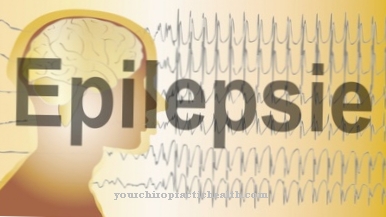Medicinal substance, stimulant drug, doping agent - that amphetamine has been through a lot in its history and has received many names. It is illegal under the name "Speed" in this country, but it was still used in the 1930s as a cold medicine and against depression and impotence. As a drug, amphetamines have actually become obsolete due to their addictive potential - the ADHD drug methylphenidate is an exception here as well.
What is amphetamine?

The active ingredient name amphetamine is the short version of the chemical name alpha-methylphenethylamine and describes a synthetically produced substance from the group of phenylethylamines, which has a non-hallucinogenic stimulating effect in the body.
The various amphetamines have a multitude of effects and have been used as drugs for many different indications throughout their history - nowadays there is no medical indication due to their enormous addictive potential.
As a drug, the amphethamines are also known under the name "Speed" - MDMA (methylenedioxymetamphetamine) is a well-known representative of this class of substances.
Pharmacological effect
Their pharmacological effects unfold Amphetamines through their relationship to the body's adrenaline and the release of the neurotransmitters noradrenaline and dopamine in the central nervous system.
They therefore belong to the pharmacological group of sympathomimetics. In the periphery of the body, the amphetamines have a clear direct adrenergic effect: blood vessels are narrowed, heartbeat and blood pressure are increased, the bronchi are widened to allow for increased oxygen uptake and the mucous membranes swell. All of this and many other partial effects are part of the fight-or-flight system of our autonomic nervous system, the sympathetic nervous system.
This is then primarily stimulated again directly in the central nervous system: As "wake-up amines", the amphetamines go through the blood-brain barrier into the brain without any problems and release noradrenaline and dopamine from the stores of nerve cell endings. Just like caffeine, amphetamines have a more pronounced effect on tired people than when they are fully awake. The tiredness disappears, the mood is lifted, there may be euphoria, the reduced performance due to fatigue is restored for a few hours.
Power reserves are mobilized, attention and concentration increase, at the same time there is an appetite inhibition and an increased urge to move - the body is put into a fight-and-flight mode right down to the tips of the hair.
The downside of the coin is that the body soon gets into a state of exhaustion with repeated administration, and ultimately there is a lack of food and sleep - even if the mind no longer recognizes this. Habituation occurs which leads to an increase in the dose. It may lead to habit formation and addiction. Psychoses can also develop at this stage of abuse. For this reason, the amphetamines are classified as narcotic drugs and are not freely available or prescribable.
Medical application & use
Nowadays there is no legitimate medical use for that Amphetamines more. In the past, the opposite was true: pretty much every one of the effects described above led to the use of amphetamines as medicinal products.
In the 30s of the last century they were cold remedies and antiallergic drugs, were used by students for whole nights of study, and were later also used against Parkinson's, depression, narcolepsy and impotence. During the Second World War, armies kept their soldiers awake en masse with amphetamines - this paved the way for the spread of the active ingredient as a drug, which was particularly prevalent from the 1950s onwards.
In 1948, an amphetamine was also launched on the market against ADHD (attention deficit hyperactivity disorder) - this is the last remaining medical use today (the methylphenidate in use today is related to the amphetamines and is therefore also subject to the BtM prescription regulations) .
In high-performance sport, amphetamines are also often used as doping agents to improve performance. The athlete does not notice his physical fatigue in this way and continues to "full throttle" - mental brakes, which are actually very useful to protect the body from overexertion, are thus switched off, so performance is increased for a short time.
Risks, side effects & dangers
Risks and side effects of the Amphetamine and its derivatives are so serious that amphetamines are no longer (legally) used today. Possession and trading in amphetamines is a criminal offense in Germany and most other European countries.
The main problem is of course the physical exhaustion that occurs when using amphetamines without the person concerned noticing and being able to assess it correctly. Vigorously dancing nights under the influence of speed and related drugs not only lead to a hangover the next morning, but can also cause serious, life-threatening exhaustion.
In the long term, a lack of appetite and lack of sleep contribute to this problem. At the same time, amphetamines are highly addictive due to their intoxicating effects. The dose has to be increased steadily due to rapid habituation processes in order to achieve the same effect.













.jpg)

.jpg)
.jpg)











.jpg)